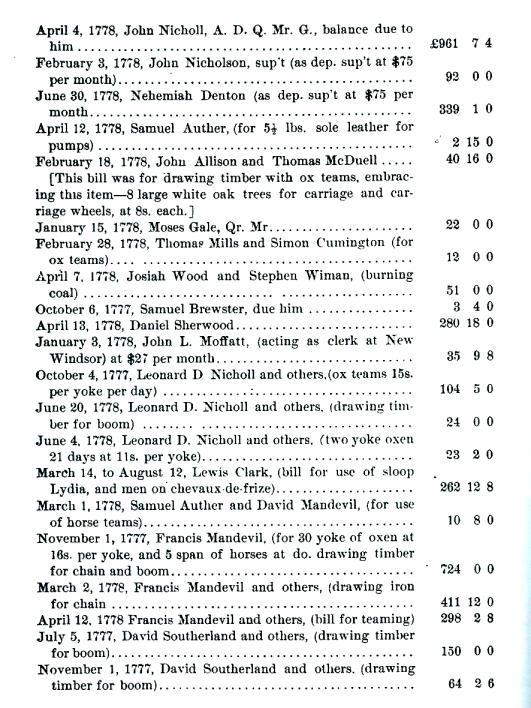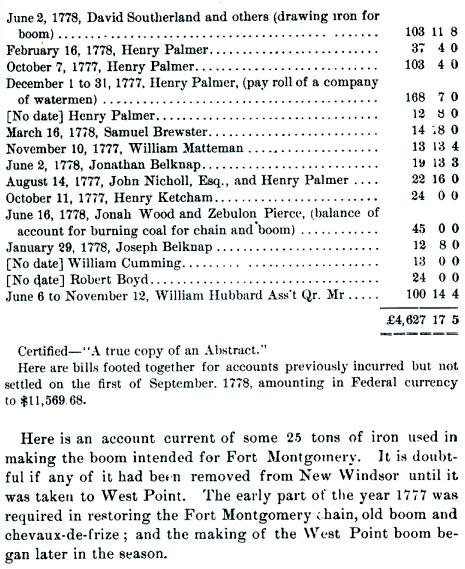Three Rivers
Hudson~Mohawk~Schoharie
History From America's Most Famous Valleys
The
Frontiersmen of New York
by
Jeptha R. Simms
Albany, NY 1883
Volume I, Page 634
The Sixth River Obstruction.-- On the completion of the chain at West Point, Capt. Machin set about finishing the boom intended for use at Fort Montgomery, to be drawn across the river in front of the chain--a little below it--still more effectually to obstruct the river against British shipping. The boom destroyed by the british at Fort Montomery was never a reliable and perfect structure. This new work consisted, as is proven, by a small portion of it recovered in 1855 and taken to Newburgh, agreeable to a description of it by Mr. Ruttenber, in his Hudson River Obstructions, page 139-of spars about 15 feet long, 12 inches in diameter, which were round, being fluted or wrought to an octagon in the centre, "These logs," says Mr. R., "are united to each other by an iron band around each end, and two links of chain of nearly two inch bar iron." Such was, no doubt, the character of the work extending from shore to shore.
And although the boom consisted of so much timber, yet it was evidently buoyed up by some anchored floats of long spars. This is inferred from the fact that Gov. Clinton and others (as I learned 50 years ago by an old gentleman named James Wood, of Springfield, N. Y.) walked across the river on the chain; and Wood said he thus crossed the river. But he spoke of only one obstruction, and that being always visible and the chain generally submerged, he undoubtedly called the boom the chain, as did Dr. Thacher and other early writers. It would have been but a little trouble to have tacked boards upon the boom across the river; nor is it improbable this was done, as there was much need of foot-crossing there, which would thus be less hazardous than stepping upon the chain links between the spars, if possible, and obviate the constant use of small boats.
After the chain was afloat, nearly a dozen companies of artificers were engaged in completing the boom. It would be a gratification to show the cost of each obstruction, but the vouchers among the Machin papers for labor and material in different obstructions, are often so blended as to render this impracticable. I will, however, copy several of them to convey an idea of the labor and expense incurred principally upon the chevaux-de-frize at Pollopel's island, and the chain and boom at West Point.
"General abstract of money due to boatmen, teamsters, etc., employed in the service of the United States, for obstructing the navigation of Hudson's river, under the direction of Capt. Thos. Machin, superintendent, and by order of Maj.-Gen. Putnam [this service began under Gen. Putnam, and ended under Gen. Parsons] from 15th January till September 1778." The dates don't show when the labor was performed, but when the bills were made.

